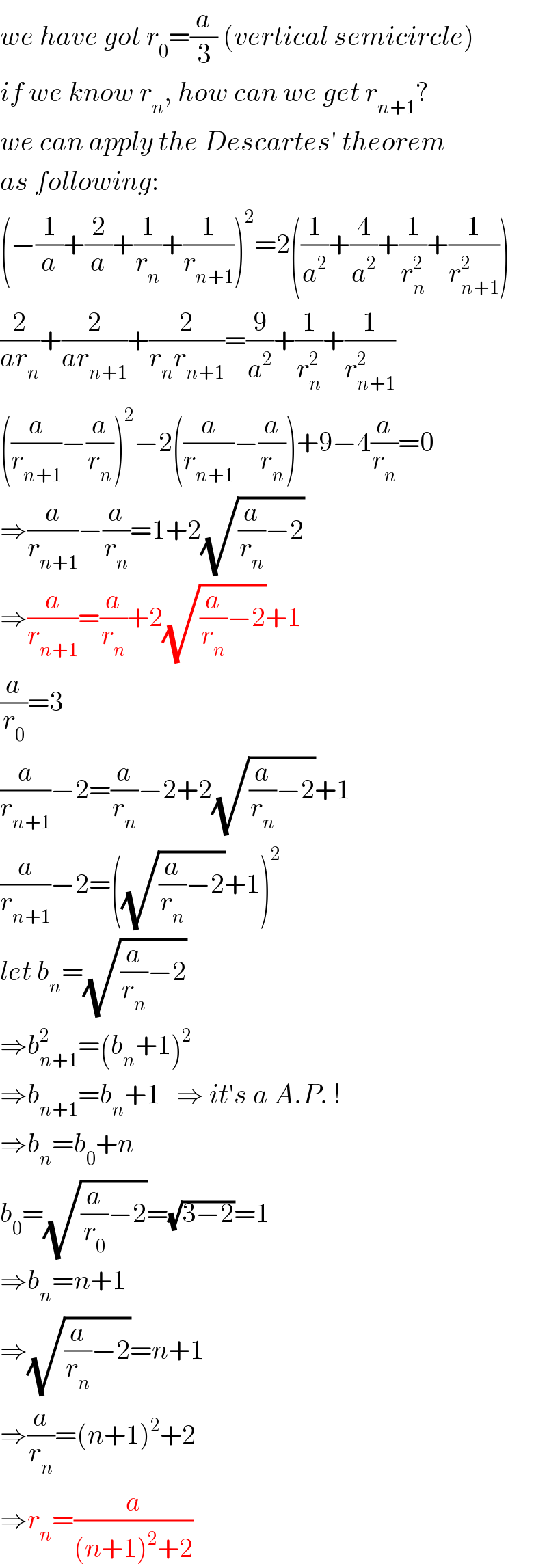
Question and Answers Forum
Question Number 79377 by mr W last updated on 24/Jan/20

Commented by mr W last updated on 24/Jan/20

Commented by key of knowledge last updated on 24/Jan/20

Commented by mr W last updated on 24/Jan/20

Answered by mr W last updated on 25/Jan/20

Commented by behi83417@gmail.com last updated on 25/Jan/20
![great! dear master. can you applay this method to:Q#10455 (and also meet a nostalgia!) [nostos:return to home algia:be in suffer]](Q79428.png)
Commented by mr W last updated on 25/Jan/20

Commented by behi83417@gmail.com last updated on 25/Jan/20

